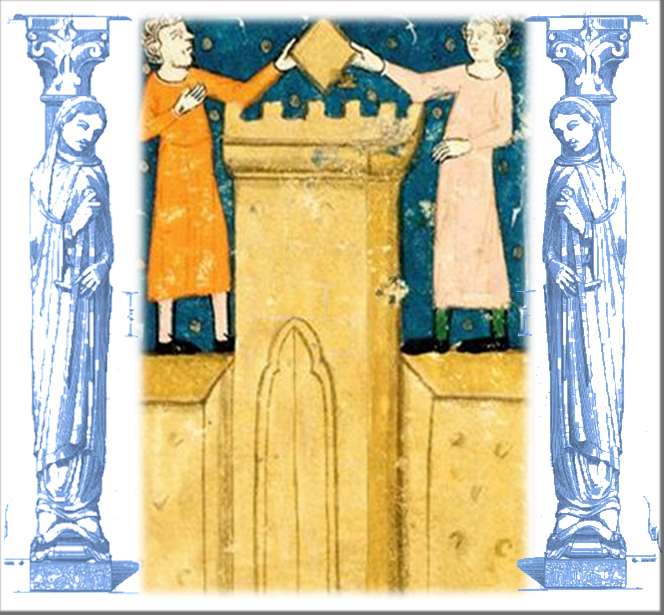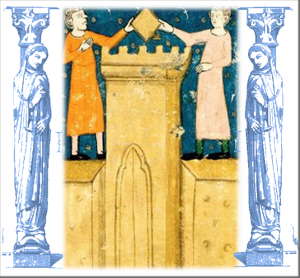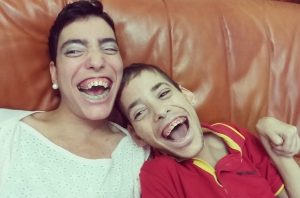
The cornerstone

The cornerstone
“The stone that the builders have discarded has become the corner stone.”
(Psalm 118: 22)
Being born with a disability or running into it in the course of life is always a tragic moment, a point of no return: for a family it is the end of the projects that they had dreamed of for their child, while in the case of an adult it can represent the death of one’s life plans. In practice, an upheaval of the existence of both the disabled person and his family. In fact disability unlike a disease is forever. You are cured of illness, disability forces you to stop, to review your life, to ask yourself about the validity of the projects you had about your future, to learn to walk with an artificial limb or to walk with a pram or to hear with an acoustic device or to use a synthesizer to communicate or use braille to read. Basically start a new life.
The person with disabilities, for these important reasons, needs an inclusive community that is committed to removing physical and social barriers and learns to break down mental barriers.
Welcoming a person in his diversity means not wanting at all costs that he is as normal as the others but accepting that he could be as much as possible, and would always be possible even in the most serious cases, subject and actor of his life starting from his potential and not from his disability.
When you encounter disability, you let yourself be blinded to the point of not being able to see the person and therefore his precious way of being that in no other person can be found. At that point, when it happens that the disability completely cancels the person to the point of marginalizing him, one enters the sad dynamism of the self-fulfilling prophecy: The person with disabilities and his family, conditioned by isolation, indifference, alter their behavior until to become or to become invisible.

Francesco e Rosalia
Francesco and Rosalia, two boys with spastic quadriparesis, are unable to use the car purchased by the family because the Municipality of residence and the neighbors, due to lack of funds, are unable to face the expenses necessary to enlarge by a few centimeters the street where their home is located. Sometimes I wonder, in the face of these episodes, how long is still the path that our country must take to call itself civil.
In our communities, it is still rare to find people with disabilities who actively participate in the life of society, and this is very sad.
In a context that is not so inclusive, the news reports, still and too often, stories of discrimination, situations of exclusion, episodes of hatred, bullying, violence, pockets of segregation. But in addition to this negative mosaic in an evident way, there are also human and family dramas that are consumed in the silence of isolation and resignation, as if they were the inevitable outcome of tragic fatalities for which there are no responsible and responsibilities: in school, in work, in our cities, in inclusive policies.
In a context that is not so inclusive, the chronicles tell us that more and more parents choose to abandon the child who has a serious disability. The common mentality, even today, wants people with disabilities relegated to separate groups or parked in apparently inclusive structures. Which family, which parent, with these assumptions, can desire a life of this type for their child.
Integrating people with disabilities must become a great challenge, which can only be overcome by focusing on the competence and collaboration of all members of the community, without exclusion, from institutions to civil society.
There are, I believe, three basic ways of living a condition of disability, which are not mutually exclusive but can coexist or reoccur in turn throughout life.
In the first case, it can be experienced as a difficulty, an obstacle, an oppression from which to try to free oneself. It is the tragic dimension of anger, of the struggle on the brink of despair.
In the second, disability is perceived as a limit of fact, which defines one’s personal identity, just as the three equal angles define the equilateral triangle. This is the dimension of serene periods, when it is easier to accept reality as it is.
The third way is to recognize a strength precisely in the weakness of disability: the stone rejected by the builders has become the corner head. Paraphrasing Psalm 118: 22, the rights of violated and trampled people with disabilities become the cornerstone of the community.
All the best and happy and prosperous 2020
Salvatore Cimmino